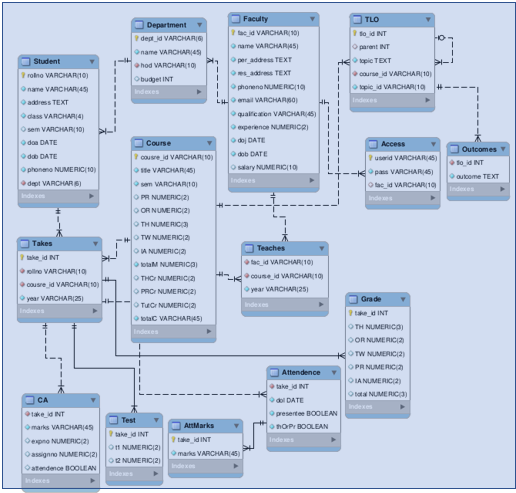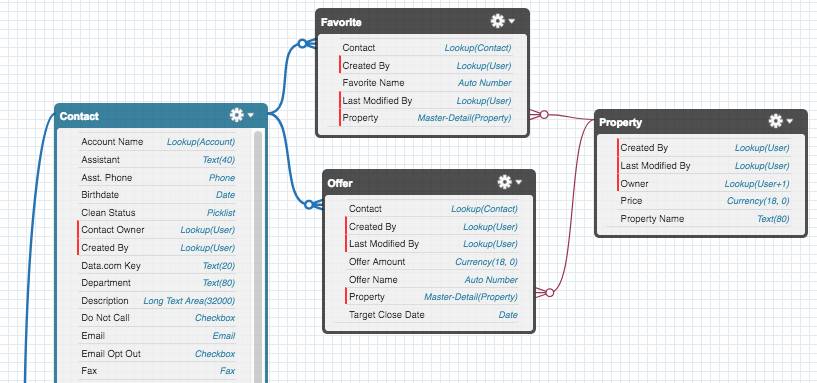
They are linked using these new ID fields we created, and these ID fields need to be in both tables. “A book has many bookstores” doesn’t make a lot of sense in this scenario. Sometimes they do make sense, such as “a player has many teams”, but representing that is another topic. Sure, it’s possible for a database to store a large amount of different kinds of information, but if you start with the purpose, it will make this process easier. As you venture further into the realm of database design, embrace your data destiny, and mold an efficient, secure, and data-driven future.
7 Database Security Best Practices: Database Security Guide - eSecurity Planet
7 Database Security Best Practices: Database Security Guide.
Posted: Fri, 21 Apr 2023 07:00:00 GMT [source]
Identify primary keys
This can prove to be a more effective and immediate method of slimming down a database than any subsetting process. Database subsetting is the name given to the extraction process. It refers to the process of extracting and using a subset or portion of the data from a database for the purposes of development, the objective being to have sufficient data to test or develop the database. Without this, some aspects of testing must be left to staging, where the security regime can be rendered sufficient to allow it to be done without data anonymization on a restored backup.
What are the three database design stages ?
Let’s dive into the world of database design and data modeling. It’s a fascinating realm where I’ll guide you through some practical examples. Database design, at its core, is about creating efficient systems that meet user requirements while optimizing performance.
Conceptual schema
Foreign and primary keys facilitate the creation of indexes to speed up table lookups; we’ll discuss this more in the indexing section of this article. A large part of your working hours as a data modeler will be dedicated to the creation of transactional databases. These databases support systems that handle online transactions, such as e-commerce or ticket booking applications. In transactional databases, it is vital to preserve the integrity of the information and to avoid anomalies in data insertions, updates or deletions. Bringing a data model into the third normal form helps to avoid integrity problems, reduce redundancy and optimize storage space.
For example, let’s say you have a set of data related to your users, and then a set of data related to something they own, like posts or comments. If you have a non-relational database, you have to do all of that yourself, and it’s easier as a company to ignore it. It creates all sorts of lax areas where data’s just kind of hanging around. One of the most common types of conceptual schemas is the ER (entity–relationship model) diagrams.

On small database systems, the process of database design is usually very simple and does not involve a lot of steps. The main objectives of database design in DBMS are to produce logical and physical designs models of the proposed database system. Any experienced database designer will quickly observe that the orange Sales table has many defects that could be solved by normalization. This would result in the green (normalized) tables on the right. Without a primary key, a table would have no reliable way to identify individual records.
This includes detailed specification of data elements and data types. At this point, we’ve discussed all the major components of database design in DBMS tutorials. It’s crucial to understand that database design isn’t just a one-off process; it’s an ongoing cycle that requires careful planning, implementation, and maintenance.
You won’t feel the same way when you have to make changes to the diagram you are working on today and you don’t remember the reasons that guided the design decisions you made. While a good editing and visualization tool like Vertabelo facilitates the visual review of diagrams, there are always errors that escape even the most trained eye. That’s why automatic validation can save you a lot of trouble and many hours of work.
Designing a Database: What You Need to Know
If changing a value in one non-key column causes another value to change, that table does not meet the third normal form. Once you know what kinds of data the database will include, where that data comes from, and how it will be used, you’re ready to start planning out the actual database. SQL Monitor helps you manage your entire SQL Server estate from a single pane of glass. Proactively mitigate potential risks with instant problem diagnosis and customizable alerting – wherever your databases are hosted. You will not lose any work, projects or data if you cancel a paid plan or downgrade.
The transaction model — the details of how the transaction actually operates — varies, though. For example, there’s a concept of “dirty reads.” This basically means you can see a draft before it goes live. But to use transactions effectively, you need to understand the transaction model. The following steps are suggestion of the data modeling process for Microsoft Access, a relational DBMS. The physical design of the database specifies the physical configuration of the database on the storage media.
This course will give you in depth understanding of most important fundamental concepts in database design with MySQL project . This is the most comprehensive and unique Database Design course Online. After the database development stage is complete, the next step is to test the database for the data accuracy, consistency and integrity. The database documentation is an important reference manual in any software development life cycle ( SDLC ).
In order to fully appreciate the above diagram, let’s look at the individual components listed in each step for overview of design process in DBMS. The steps in the development life cycle do not necessarily have to be followed religiously in a sequential manner. A diagram with a good layout improves the productivity of everyone who has to work with a data model. To make a good layout, you have to take into account the distribution of objects, intersection of lines, and use of colors and areas, among other things. You can get many tips on improving the layout of your diagrams in this article. Gustavo du Mortier is a functional and data analyst at MasterSoft, an Argentinean software company specializing in ERP and healthcare solutions.

No comments:
Post a Comment